Waste water
Increasing needs for industry are leading to increased waste water production which, if discharged untreated into the environment, poses a major public health problem. The main purpose of Wastewater treatment is to remove contaminants from wastewater and convert it into an effluent that can be returned to the water cycle. Once returned to the water cycle, the effluent creates an acceptable impact on the environment or is reused for various purposes.

Therefore, increasing attention is paid to environmental biotechnology and the application of aerobic granule technology in wastewater treatment. If we observe the composition of aerobic granular sludge (AGS), it is a type of biofilm consisting mainly of bacteria that are self-immobilized, very compact structure and high sedimentation of biomass. The characteristics of granular sludge are tolerance of toxic ingredients, maintenance of the redox system, the ability to adjust the high organic load. Due to these characteristics, the technology of aerobic granules has an increasing role in the treatment of various wastewaters.
AGS can be formed in a wide range of DO concentrations, from only 0.7–1.0 to 2–7 mg/L. DO less than 2 – 5 mg/L has been reported to lead to granule instability.
Portable DO Meters
Save youself from hassle go optical!
Portable meters provide the versatility to bring the meter to the sample. Hanna Instruments offers portable meters with the features and performance of a benchtop.
Portable Optical DO (opdo) meter – HI98198

The HI98198 is supplied complete with all accessories including probe, smartcap sensor with built in RFID, and a rugged carrying case.
Advantages: HI98198 Dissolved Oxygen Meter has many advantages over other Galvanic and Polarographic Dissolved Oxygen Meters. This meter uses HI764113 Rugged Optical Dissolved Oxygen Probe for Dissolved Oxygen measurement which has following benefits.
- No membranes
- No electrolytes
- No oxygen consumption
- No flow dependence or minimum flow rate
- Fast and stable readings
- Minimal maintenance
HI98198 uses a luminescent optical method for the measurement of dissolved oxygen in water and wastewater.
This professional, waterproof meter complies with IP67 standards and measures:
- DO
- barometric
- pressure
- BOD
- temperature
How to make multiple measurements at once?
HANNA Multiparameter meters
Portable pH/EC/D O Meter with Bluetooth – HI98494
Functional and accurate, this meter is capable of testing 12 different water quality parameters using pH, EC, and optical DO sensors. Transfer data to a smart device for review or sharing with the integrated Bluetooth connection and Hanna Lab App.
- Waterproof ( meter rated IP67, probe rated IP68)
- Automatic interval logging of up to 45,000 samples or log-on-demand
- Perfect for environmental and industrial professionals.
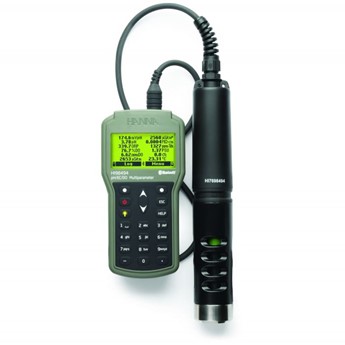
Waterproof portable logging multiparameter – HI9829

The probe transmits readings digitally with options to log data while disconnected from the meter.
An optional GPS provides location tracking of measurements. The complete system is simple to setup and easy to use. The HI9829 is highly customizable and supplied with all necessary accessories, packaged in a durable carrying case.

The HI9829 monitors up to 14 different water quality parameters. The microprocessor based multi-sensor probe allows for the measurement of key parameters including:
- pH,
- ORP,
- EC conductivity,
- dissolved oxygen,
- turbidity,
- ammonium,
- chloride,
- nitrate,
- and temperature.
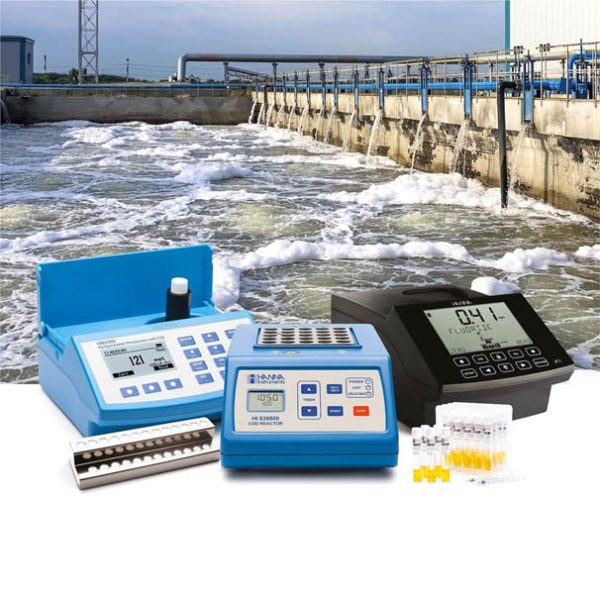
Shear forces affect the shape and structure of aerobic granules. Granules can also form at speeds of only 0.41 cm/s during low COD (300 mg COD L-1), but not with medium or high COD wastewater (600 or 1200 mg COD L − 1). Performing COD tests the right way is important in determining wastewater treatment effectiveness and can help diagnose any problems in treatment. The COD method is also used in applications in power plants, chemical industry, paper industry, laundries, environmental studies and general education . The efficiency of the treatment process is normally expressed as a percentage of oxidizable matter purified during the cycle. For monitoring COD Hanna has professional solutions.
Wastewater Multiparameter (with COD) Benchtop Photometer and pH meter – HI83314
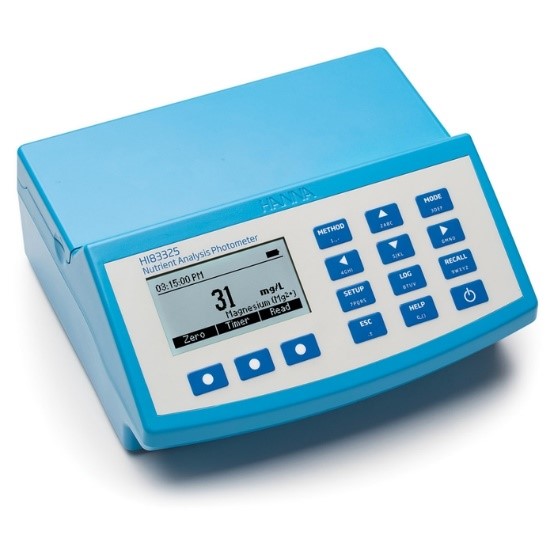
HI83314 is a compact, multiparameter photometer for measuring key water and wastewater quality parameters. The meter is one of the most advanced photometers available with an innovative optical design that utilizes a reference detector and focusing lens to eliminate errors from changes in the light source and from imperfections in the glass cuvette. 10 key water and wastewater quality parameters with 20 different methods covering multiple ranges are programmed into the meter. Wastewater treatment digestion parameters include COD, Total Nitrogen and Total Phosphorous, which are important for monitoring nutrient removal. The HI83314 also offers an absorbance measurement mode for performance verification and for users that would like to develop their own concentration versus absorbance curves. To save valuable laboratory benchtop space, the HI83314 doubles as a professional pH meter with its digital pH/temperature electrode input. Now one meter can be used for both photometric and pH measurements.
Iris Visible Spectrophotometer – HI801
Customize your methods, take a wide range of measurements, and feel confident in your testing accuracy with iris.
The convenience of pre-programmed methods with the option to expand.
iris comes pre-programmed with more than 80 commonly used chemical analysis methods to help you get started. Simply update these methods by connecting to a computer or flash drive.
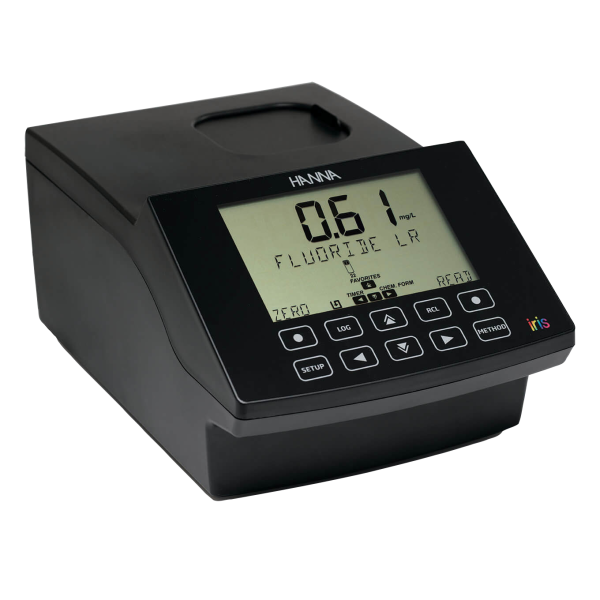
At the temperature from 8 to 30°C, AGS processes have been successfully carried out. At low temperatures the granules become irregularly shaped and unstable with low nutrient removal efficiency. Because microbial activity is low at low temperatures, it is suggested that DO may penetrate the internal anoxic portion to prevent denitrification.
For correct measuring of temperature use Hanna's thermometers!
K-Type Thermocouple Thermometer – HI935005
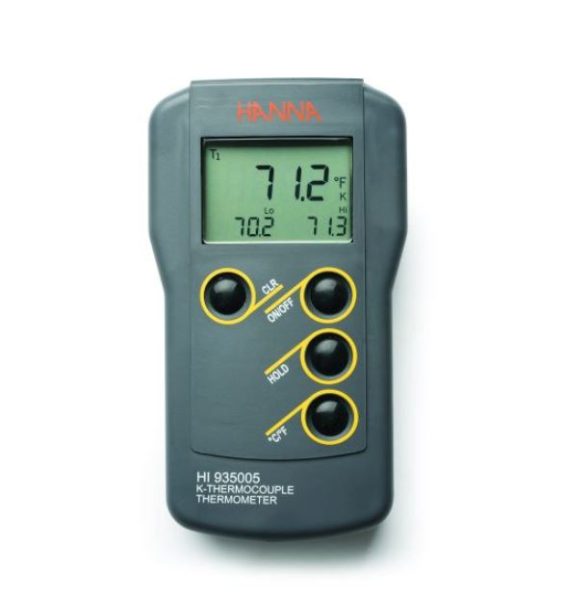
Termocouple Thermometer The HI935005 is a K-type thermocouple thermometer that can be used with a wide variety of K-type probes. This thermometer offers two measurement ranges from -50.0 to 199.9°C and 200 to 1350°C which can also be displayed in °F (-58.0 to 399.9°F and 400 to 2462°F). With a ±0.2% full scale accuracy, the HI935005 waterproof thermometers are perfectly suited for temperature measurements in the laboratory or the field.
Nives Vinceković Budor,mag.ing.chem.ing.
Tajana Mokrović, mag.nutr.
Sources:
Winkler M.K.H., Kleerebezem R., de Bruin L.M., Verheijen P.J., Abbas B., Habermacher J., van Loosdrecht M.C. (2013) Microbial diversity differences within aerobic granular sludge and activated sludge flocs. Applied microbiology and biotechnology 97: 7447–7458.
Devlin T.R., di Biase A., Kowalski M., Oleszkiewicz J.A. (2017) Granulation of activated sludge under low hydrodynamic shear and different wastewater characteristics. Bioresource Technology 224: 229–235.



